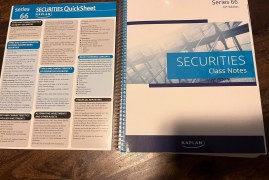Your pension may be invested in stocks, bonds, real estate, mutual funds, and other assets. Wondering where your pension funds are allocated?
It’s common for pension funds to be invested in a mix of asset classes such as stocks, bonds, real estate, and mutual funds. These investments are carefully selected and managed by professional fund managers to ensure growth and security for your retirement savings.
Understanding how your pension is invested can give you insight into the potential risk and return profile of your retirement funds. Let’s explore further to shed light on the investment strategies commonly used to secure pension funds for individuals in their post-retirement years.
The Importance Of Pension Investment
Pension investment is a crucial aspect of securing a stable and comfortable retirement. Understanding where your pension is invested and the impact of these investments is essential for future financial security. Here, we’ll delve into the significance of pension investment and its effects on retirement planning.
Understanding Pension Investment
The world of pension investment can seem complex, but it boils down to one vital principle – growing your retirement funds. This is achieved through various investment vehicles, such as stocks, bonds, and mutual funds, which are carefully selected to align with your retirement goals.
Impact Of Pension Investment On Retirement
Pension investment directly dictates the success of your retirement plan. Wise investment choices can substantially increase your retirement funds, providing you with financial stability during your golden years. Conversely, poor investment decisions can leave you with insufficient funds, jeopardizing your retirement lifestyle.
Types Of Pension Investment
Traditional Pension Plans
A traditional pension plan guarantees a specific payout upon retirement.
Defined Contribution Plans
A defined contribution plan accumulates money for retirement based on contributions.
Common Investment Vehicles
When it comes to pension investments, understanding where your money is being allocated is crucial. Commonly referred to as investment vehicles, these are the different types of assets in which pension funds are invested. By diversifying the investments, pension funds aim to achieve long-term growth and mitigate risks. Let’s explore three common investment vehicles:
Stocks And Equities
Stocks and equities are often an integral part of pension fund portfolios. By investing in shares of publicly traded companies, pension funds have the potential to benefit from capital gains and dividends. Stocks allow investors to own a portion of a company and participate in its growth and success. However, the value of stocks can fluctuate, meaning both gains and losses are possible.
Bonds And Fixed Income Investments
Bonds and fixed income investments provide a more stable and predictable return compared to stocks. When investors purchase bonds, they essentially lend money to governments or corporations in exchange for regular interest payments and the return of their principal amount at maturity. Pension funds often invest in bonds to generate income and preserve capital. Bonds are generally considered less volatile than stocks, but their returns may be lower.
Real Estate Investments
Real estate investments can provide a steady income stream and potential long-term appreciation. Pension funds can invest in various types of real estate, including residential, commercial, and industrial properties. These investments can be made directly or through real estate investment trusts (REITs). By diversifying their portfolios to include real estate, pension funds aim to reduce risk and potentially benefit from the property market’s growth.
Risk Management In Pension Investment
Your pension is an important investment that can greatly impact your future financial security. It’s crucial to understand where your pension money is invested and how risk is managed to ensure the best possible returns. Risk management in pension investment involves various strategies, assessments, and mitigation techniques to safeguard your funds and optimize growth.
Diversification Strategies
One of the key risk management strategies in pension investment is diversification. By spreading your pension funds across different asset classes, such as stocks, bonds, real estate, and commodities, you can minimize the impact of any single investment performing poorly. Diversification helps to balance risk and increases the potential for higher returns. It allows your pension portfolio to benefit from positive performance in one asset class while mitigating potential losses in another.
For example, suppose you invest a significant portion of your pension in stocks. If the stock market experiences a downturn, your entire pension savings could be at risk. However, by diversifying your portfolio to include bonds or other investment options, you spread the risk and potential losses.
Risk Assessment And Mitigation
Risk assessment and mitigation are crucial aspects of managing pension investments. It involves evaluating the potential risks associated with each investment option and implementing measures to mitigate those risks.
- Regular monitoring and analysis of the investment market to identify emerging risks.
- Implementing risk control mechanisms to limit potential losses.
- Ensuring proper asset allocation based on risk tolerance, time horizon, and financial goals.
- Stress-testing investment portfolios to measure their resilience in adverse market conditions.
- Constantly reviewing and adjusting the investment strategy to adapt to changing market dynamics.
By actively assessing and managing risks, pension providers strive to protect your investments and maximize returns.
Environmental, Social, And Governance (esg) Factors In Pension Investment
Environmental, Social, and Governance (ESG) Factors in Pension Investment:
Incorporating Esg Principles
Pensions are increasingly considering ESG principles in investment decisions.
- ESG factors include environmental impact, social responsibility, and governance practices.
- Companies are evaluated based on their sustainability efforts and ethical practices.
Impact Investing
Investing in companies making a positive impact on society and the environment.
- Impact investing focuses on generating social and environmental benefits alongside financial returns.
- It aligns with pension holders’ values and contributes to a more sustainable future.
Role Of Financial Institutions
Financial institutions play a crucial role in determining where pension funds are invested. These institutions, including investment management firms and pension fund managers, are entrusted with the responsibility of managing and growing the assets of pension funds while ensuring the security and stability of the investments.
Investment Management Firms
Investment management firms are pivotal in the process of managing pension funds. They are responsible for making investment decisions on behalf of pension funds to achieve long-term financial goals. These firms conduct thorough research and analysis to identify suitable investment opportunities that align with the risk tolerance and objectives of the pension fund.
Pension Fund Managers
Pension fund managers oversee the daily operations and investment strategies of pension funds. Their primary objective is to maximize returns while carefully managing risks. They monitor the performance of investments, make informed decisions, and adapt investment strategies based on market conditions and the changing needs of the pension fund.
Regulatory Framework For Pension Investments
Pension investments are subject to a regulatory framework that ensures the protection and proper management of funds. Understanding the regulatory framework for pension investments is crucial for individuals to gain clarity on where their pension is invested. This framework involves government regulations and fiduciary responsibilities, which play a vital role in safeguarding pension funds.
Government Regulations
Government regulations form the backbone of the regulatory framework for pension investments. These regulations establish the guidelines and standards that pension funds and investment managers must adhere to. They are designed to safeguard the interests of pensioners and ensure that investments are managed responsibly and in compliance with the law.
Fiduciary Responsibilities
Fiduciary responsibilities are a critical aspect of the regulatory framework for pension investments. Pension fund trustees and investment managers have fiduciary duties to act in the best interests of the pension plan participants. This involves exercising prudence, loyalty, and care in managing the investments, minimizing conflicts of interest, and ensuring transparency in decision-making processes.
Maximizing Pension Investments For Retirement
One of the keys to a secure and comfortable retirement is knowing where your pension funds are invested and ensuring they are being utilized to their fullest potential. By strategically allocating your pension assets and engaging in long-term financial planning, you can maximize your investments to provide a reliable income during your retirement years.
Strategic asset allocation is a crucial aspect of maximizing your pension investments. By diversifying your portfolio across various asset classes, such as stocks, bonds, and real estate, you can minimize risk and maximize potential returns. A well-balanced investment strategy takes into account your risk tolerance, time horizon, and financial goals.
Here’s an example of a strategic asset allocation:
| Asset Class | Allocation Percentage |
|---|---|
| Stocks | 60% |
| Bonds | 30% |
| Real Estate | 10% |
When it comes to pension investments, long-term financial planning is paramount. By thinking ahead and setting clear retirement goals, you can ensure your investments align with your desired lifestyle. Long-term planning involves regularly reviewing and adjusting your investment portfolio to maximize growth potential and mitigate any potential risks.
Here are some tips for effective long-term financial planning:
- Start planning and investing early to take advantage of compounding returns.
- Regularly contribute to your pension fund to build up your retirement savings.
- Consider working with a financial advisor who specializes in retirement planning.
- Monitor your investments and make adjustments as needed to stay on track with your retirement goals.
By implementing strategic asset allocation and embracing long-term financial planning, you can maximize your pension investments and pave the way for a secure and fulfilling retirement.
Frequently Asked Questions On Where Is My Pension Invested
Where Is Pension Money Invested?
Pension money is typically invested in diverse assets, such as stocks, bonds, and real estate, to generate returns for retirement. These investments are managed by pension funds and financial institutions to ensure long-term growth and stability for retirees.
Where Do Pension Funds Invest Their Money?
Pension funds typically invest in stocks, bonds, real estate, and other assets to generate returns for retirees.
Where Does My Pension Go?
Your pension funds are typically invested in a retirement account or pension plan, managed by your employer or a financial institution. It’s important to monitor and regularly review the performance of your pension to ensure it aligns with your retirement goals.
How Do I Access My Pension Funds?
To access your pension funds, contact your pension provider and fill out necessary forms. Typically, you can choose between a lump sum or regular payments.
Conclusion
Curious where your pension is invested? Understanding your pension investments is crucial for financial security. Take charge of your retirement savings by knowing where your money goes. Make informed decisions to secure your future. Stay informed and make your pension work for you.


Leave a comment